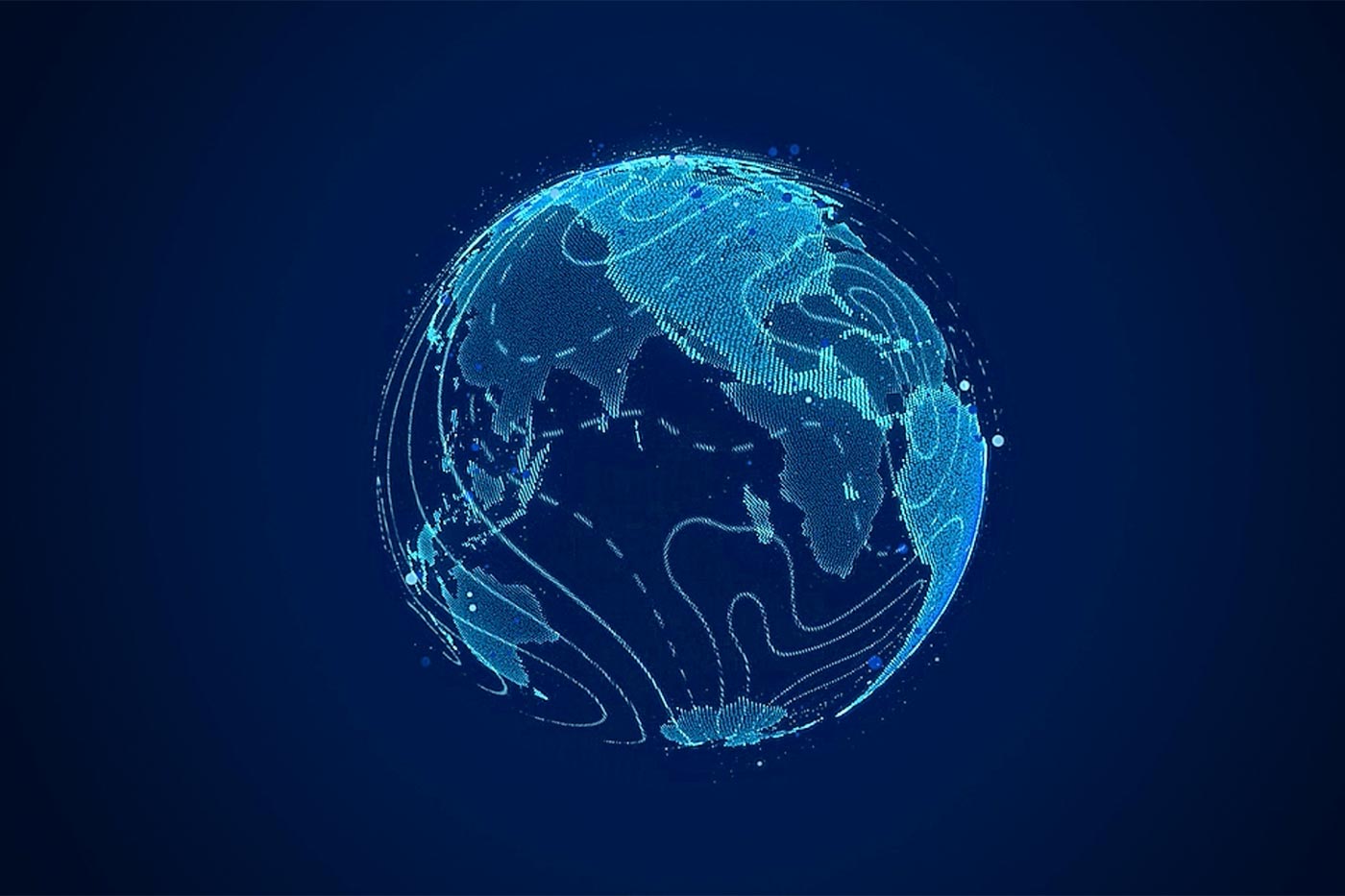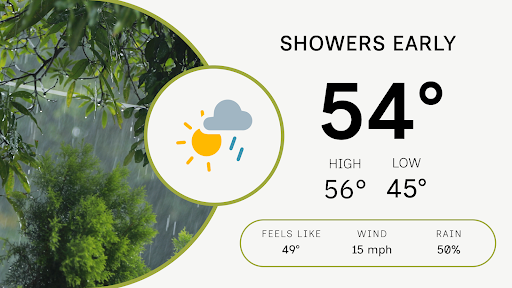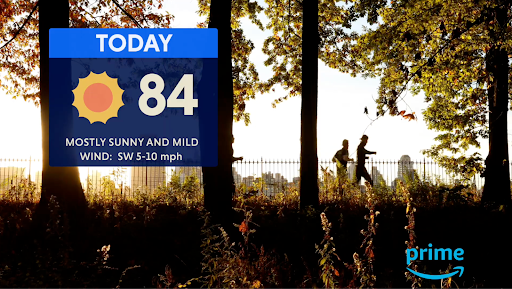Weather intelligence for the future: Crafting a strategic enterprise approach to changing environmental conditions
Continue readingWhat is AI?
AI, or artificial intelligence, refers to the development of intelligent systems that can perform tasks requiring human-like intelligence. It encompasses various approaches, of which the most relevant for weather forecasting is machine learning.
Machine learning is a specific subset of AI that involves training algorithms to learn from data and perform specific tasks without explicit programming. It focuses on improving the accuracy and efficiency of these tasks by leveraging patterns and correlations in the data. In short, AI encompasses the broader field of creating intelligent systems, while machine learning is a specific technique within AI that enables systems to learn from data and perform specific functions without explicit programming.
How is AI used in weather forecasting?
Both weather broadcasters and viewers have greatly benefited from the integration of AI technologies, revolutionizing how predictions are made and communicated. Here are some of the most common applications of AI within the field:
Weather Prediction
Using AI for weather prediction is not a new innovation and has been in use since the 1970s. The weather models that broadcasters rely on to make accurate forecasts consist of complex algorithms run on supercomputers. Machine-learning techniques enhance these models by making them more applicable and precise.
Content Triggers
Besides traditional TV and radio broadcasts, many broadcasters today offer dedicated smartphone apps that provide up-to-the-minute weather information to viewers. One way AI helps broadcasters personalize the app experience is by enabling content triggers. A content trigger is a set of weather factors that automatically trigger an action in the app, such as sending the user a notification. For example, a broadcaster could set a trigger to send viewers safety graphics when temperatures in their area exceed a certain threshold for a certain amount of time in a day. These content triggers ensure that individuals receive timely and relevant information, enhancing their awareness and preparedness in weather-related situations.
Severe weather & weather alerts
On the forecasting side, by analyzing real-time data, AI can rapidly identify potential hazards such as lightning strikes, high winds or flash flooding. Then, in-app AI plays a crucial role in sending viewers automated severe weather alerts to keep them safe. These timely notifications enable individuals to take immediate action, seek shelter, or evacuate if necessary, minimizing the risks associated with severe weather events.
Lifestyle content
AI augments TV weather segments with lifestyle-related content, making weather updates more engaging and habitual. This includes providing broadcasters with health, wellness and scientific information that complements weather reports, such as air quality indexes, pollen forecasts and UV index levels. By integrating this additional context, AI enhances the user experience, enabling individuals to make more informed decisions about outdoor activities, health precautions and overall well-being based on the weather conditions.
Traffic reports
AI can monitor traffic flows and drive times to generate content that helps broadcasters inform viewers about traffic conditions and possible delays. This insight improves the accuracy and timeliness of traffic reports, allowing individuals to plan their commutes more effectively and make informed decisions about alternative routes or modes of transportation to avoid congestion. By leveraging AI-driven insights, broadcasters can provide up-to-date and relevant information, enhancing the overall quality of traffic reporting for viewers.
What are the benefits of using AI for weather?
Using AI in weather forecasting offers several significant benefits to the field.
Faster Weather Predictions
AI algorithms enable remarkable speed in processing vast amounts of data, resulting in faster and more immediate weather predictions. The ability to analyze extensive data sets in real time allows meteorologists and forecasters to provide timely and up-to-date information to individuals, businesses and governments. This speed is particularly crucial during rapidly evolving weather situations, such as severe storms or approaching hurricanes, where quick decisions and actions are necessary.
More Accurate Predictions
Moreover, machine learning in particular enhances the accuracy of weather forecasts. AI algorithms learn from historical and real-time data, identifying intricate patterns and correlations that might go unnoticed through traditional analysis methods. Sophisticated weather models can also account for complex weather conditions that are difficult to simulate through other means. This leads to more precise predictions, enabling individuals and organizations to make better-informed decisions based on the most accurate available information.
Enhanced Efficiency
Additionally, AI-driven automation processes bring enhanced efficiency to weather forecasting operations. By automating data processing and other tasks, AI enables meteorologists to focus more on the interpretation, analysis and communication of weather information. This shift allows experts to delve deeper into the implications and impacts of weather conditions, providing valuable insights and actionable recommendations to various stakeholders. The streamlined operations driven by AI also contribute to improved resource allocation and cost-effectiveness within weather-forecasting departments and organizations.
How does AI make weather predictions?
By analyzing extensive sets of atmospheric data, machine-learning algorithms extract valuable insights, identify hidden patterns and optimize meteorological models for improved performance. A lot of this information is provided by government agencies, such as The National Weather Service, in the US. However, all of these weather models are slightly different and can showcase a range of what could happen across the globe.
Global High-Resolution Atmospheric Forecasting System (GRAF), an advanced forecasting model, demonstrates the application of AI optimization techniques. Designed to generate highly accurate short-term weather forecasts, GRAF incorporates extensive atmospheric observations and employs machine-learning techniques to refine and optimize models. GRAF updates every hour and is the first weather model to run on a GPU-accelerated supercomputer. As a result, GRAF can run 5-6x faster, providing a more-accurate weather forecast.
By strategically utilizing AI and optimization methods, GRAF and similar models distill multiple weather model opinions and leverage vast amounts of observational data to provide the most-accurate forecasts possible.
How accurately can AI predict weather?
Due to the butterfly effect, it’s impossible to know how minute events can affect complex systems. In 1972, mathematician and meteorologist, Edward Lorenz, asked the infamous question, “Does the flap of a butterfly’s wings in Brazil set off a tornado in Texas?” Through this observation, he reiterated that scientists can’t currently measure the consequences of small events on the atmosphere. Since meteorologists don’t know the location of each particle in the atmosphere, there is always room for error in weather forecasting. However, AI makes it possible to make reliable weather predictions, despite these challenges.
By enabling the use of complex weather models that take in vast quantities of data, AI generally enables meteorologists to make much more accurate forecasts than they otherwise could. The accuracy of AI weather prediction depends on various factors, including the quality and quantity of data available, the sophistication of the AI model, and the specific weather phenomenon being predicted. For example, as in any weather forecast, short-term AI-powered predictions (up to a few days) tend to be more accurate than long-term ones (weeks or months). And because AI tools often rely on finding patterns in historical data, it remains difficult for them to predict rare or extreme weather events that don’t follow previous trends.
However, when combining AI and machine learning with human expertise, The Weather Company was found to be three times more likely to be the most accurate forecaster compared to other weather providers.1
What are the current challenges of AI in weather prediction?
Despite the significant benefits of AI in weather prediction, several challenges need to be addressed. One of the fundamental challenges is the inherent complexity of weather systems, which makes achieving 100% accuracy an unattainable goal. Weather patterns are influenced by numerous interconnected factors, including atmospheric conditions, geographic features and chaotic behavior, making precise predictions a daunting task.
Furthermore, the full potential of AI in weather prediction may not be realized if some weather stations and forecasting institutions are not fully equipped or capable of leveraging AI-driven insights. Effective integration of AI technologies requires infrastructure, resources and expertise to collect, analyze and interpret vast amounts of weather data. It is crucial for weather forecasting organizations to invest in AI capabilities and ensure that the necessary training and tools are available to meteorologists and forecasters to harness the power of AI effectively.
Where do humans fit in with AI weather prediction?
While AI plays a vital role in improving the accuracy and efficiency of weather prediction, humans remain essential for interpreting and communicating weather information effectively. Human meteorologists possess the expertise to transform numerical weather data into meaningful insights and outcomes that people can understand, empowering them to make informed decisions. For example, if an AI algorithm predicts heavy snowfall from an upcoming blizzard, the meteorologist can explain how it will affect traffic and commuters’ journeys the following morning. Modern weather broadcasts that combine AI-driven forecast accuracy with personalized, human storytelling make a significant positive impact on viewers’ daily lives.
Incorporating AI weather forecasting with Max products
The Weather Company’s Max products, including Max Storm and Max Velocity, integrate multiple weather models that leverage AI algorithms, so users can distill a vast array of opinions to deliver the best possible forecast.
GRAF, The Weather Company’s proprietary model, further complements these efforts by utilizing current atmospheric data and machine-learning algorithms to provide accurate short-term weather predictions. Together, these advancements demonstrate The Weather Company’s commitment to using AI and advanced modeling techniques to deliver reliable and actionable weather information. Contact The Weather Company today to learn more about their innovative, AI-driven weather forecasting solutions.
Frequently Asked Questions About AI
AI has been used since the 1970s to help predict the weather. By running complex algorithms on supercomputers, machine learning can better predict the weather forecast. Artificial intelligence is a valuable tool in making weather forecasting more accurate.
The Weather Company’s combination of AI and human expertise yields the most accurate forecast provider most often in each region compared, including the US, Canada, Central America, South America, Europe, Africa, Middle East and Asia-Pacific.2 The Weather Company uses AI to integrate input from nearly 100 forecast models around the world, weighing factors from each model based on geography, time, weather type and recent forecast accuracy.
AI in broadcast is a tool that can help meteorologists become more efficient but is not designed to replace them. Humans are still much better at deriving insights from the data that will be valuable to their viewers and offering local context (e.g. how weather may affect today’s town parade). Additionally, meteorologists excel at storytelling and continue to be the brand for many stations.
Let’s talk
To learn more about our professional weather and traffic software solutions for the media industry, contact our media experts today.
Contact us1 The Weather Company’s global percent of top rankings averaged over all forecast lead days (1-9) during 2022 was over three times higher than any other weather provider studied. Derived by The Weather Company using data from: ForecastWatch, Global and Regional Weather Forecast Accuracy Overview, 2017-2022, https://forecastwatch.com/AccuracyOverview2017-2022, commissioned by The Weather Company.
2 The Weather Company had the highest percentage of first-place finishes over the study period and averaged over all forecast lead days (1-9) in each region studied, according to ForecastWatch, Global and Regional Weather Forecast Accuracy Overview, 2017-2022 (pg 21), https://forecastwatch.com/AccuracyOverview2017-2022, commissioned by The Weather Company.







